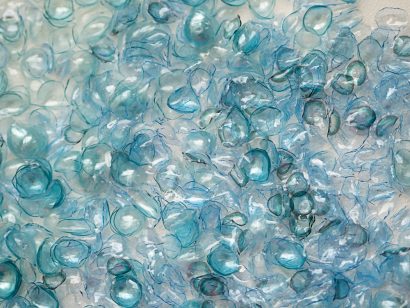Contact Lens Disposal: The Good, the Bad and the Ugly
Written by Dr. David Evans Last modified on August 28, 2018
I’m one of the estimated 45 million Americans who wears contact lenses to correct a refractive error. Although the general concept behind contacts dates all the way back to Leonardo da Vinci in the 1500’s, the corrective technology has only really been a functional solution to refractive error since around 1948 when the first all-plastic “corneal” contact lenses were introduced. Since then, the world of contact lenses has seen a number of evolutions, including the introduction of rigid gas permeable lenses, followed by the introduction of soft extended wear lenses, bifocal lenses, toric lenses and many others. One of the more noteworthy (and somewhat recent) evolutions came with the introduction of daily disposable contact lenses in 1995. Disposable lenses have real benefits, but the issue of disposal is not as simple as you might think.
The Good
Generally speaking, the more frequently you replace your contacts, the better the health and comfort of your eyes. Although there are excellent cleaning solutions available, none are as effective as disposing and replacing your lenses on a regular basis. The day-to-day accumulation of debris has an effect on the quality of the lens, regardless of the how well it’s cleaned. It simply can’t compare to a fresh, new contact lens. But what about convenience? You may think that extended wear contact lenses provide a more simple solution because you can put it in place and not have to think about them. But just because contacts are considered extended wear doesn’t make them permanent. In fact, for best eye health, extended wear contacts should be removed at night, as it’s not advisable to sleep while wearing any contact lenses. Cleaning and maintaining extended wear lenses is a far more cumbersome process than simply opening a new pack in the morning, and throwing them away in the evening. That’s not to say that extended wear lenses aren’t an excellent solution to refractive error. It’s simply a matter of determining the type of lenses that best fit your needs and lifestyle.The Bad
Although daily disposable contact lenses offer great benefits, they are more costly than other alternatives. The individual lenses obviously aren’t more expensive, but when you consider that you’re using two daily, 365 days a year… that’s a lot of contact lenses. Price varies from brand-to-brand, but you can expect to pay roughly $1 per contact lens. Contact Lens Disposal and the Environment You can weigh the convenience of using daily disposable contact lenses against the cost, but there’s another consideration that may tip the scale if you’re particularly environmentally sensitive. You’re essentially throwing away 730 pieces of plastic a year. A study from Arizona State University estimated that approximately 14 billion contact lenses are thrown away every year in the U.S. alone. This can certainly add to the growing epidemic of plastic waste that is winding up everywhere from landfills, to streets, to farmlands, to oceans. (In 2015 an engineering professor at the University of Georgia estimated that between 5.3-to-14 million tons of plastic ends up in oceans each year.) Products like daily disposable contact lenses obviously have the potential to add to this plastic epidemic. The good news is that contact lens manufacturers are keenly aware of the potential environmental impact and have introduced steps to help counter any effects. For example, Bausch + Lomb, one of the leading vendors of contact lenses, introduced a recycling program called ONE by ONE. Through this innovative program, you are able to recycle your daily lenses hassle free. Blister packs, top foil and contact lenses are simply dropped in a small cardboard box at your home each day. Once full, you simply print a free shipping label and send them for recycling. Alternatively, you could consider another, more permanent solution to your refractive error, such as LASIK or PRK.The Ugly
The epidemic of contact lens disposal was highlighted in a recent article I came across on BBC News, in which researchers in the U.S. found that 15 to 20 percent of contact lens wearers’ preferred method of disposal was simply flushing them down their toilet or bathroom sink. As a result, tons of plastic makes its way into waste water treatment plants, where it ends up as part of a sewage sludge material often spread on farmland. In fact, the Arizona State study estimates that approximately 14 tons of contact lens plastic ends up in this fashion with potentially devastating ecological impact. Fortunately, programs such as ONE by ONE and innovations in contact lens materials should lessen any such future ecological burden. Sources: Healthy Contact Lens Wear and Care – Centers for Disease Control and Prevention Plastic Pollution: ‘Stop Flushing Contact Lenses Down the Loo’ – BBC News The ONE by ONE Recycling Program – Bausch + Lombhttps://www.lvcenter4sight.com/contact-lens-disposal-the-good-the-bad-and-the-ugly/
Comments
Post a Comment